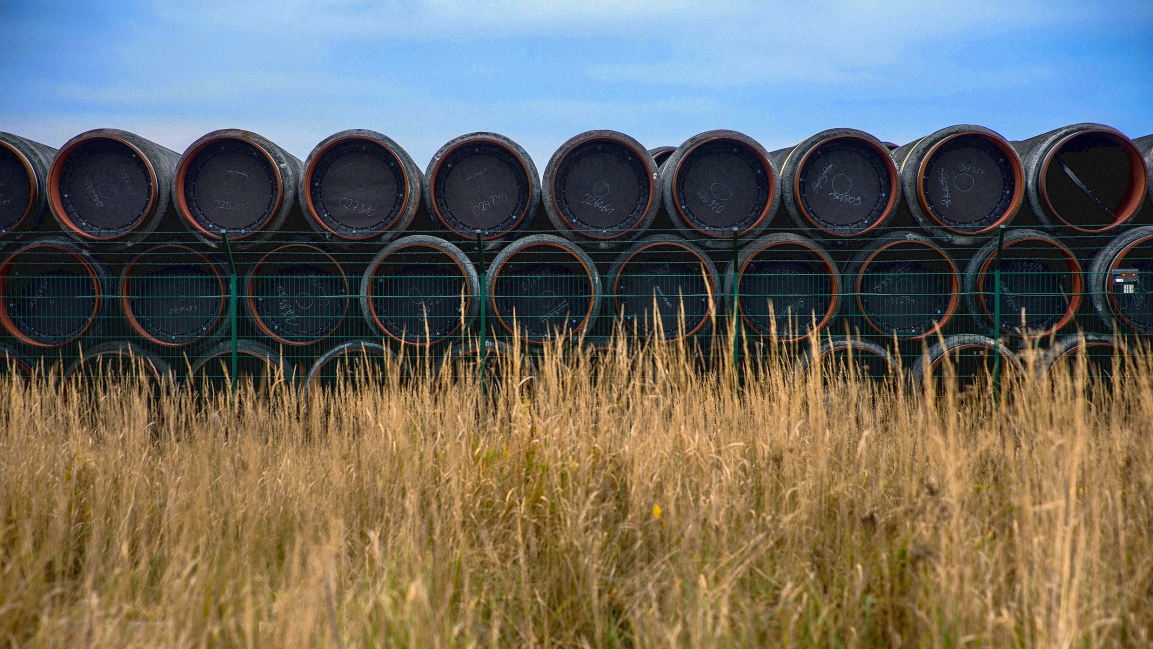Could Russia inadvertently speed up the green energy transition?
If you took a trip to Hawaii right now, the lights at your hotel might be running on Russian gas. The majority of the state’s electricity is generated from petroleum; around a third of that oil comes from Russia. It’s one example of the world’s tangled connections to Russian oil and gas, which are the country’s biggest exports—and a major source of the money that Vladimir Putin is using to attack Ukraine.
At a global climate meeting Monday, Ukraine’s representative, Svitlana Krakovska, pointed out the connection: “Human-induced climate change and the war on Ukraine have the same roots—fossil fuels—and our dependence on them,” she said. Fossil fuels helped make the war possible as Russia threatened to cut off supplies that countries such as Germany rely on heavily for heat, and that other places, such as Hawaii, rely on for electricity. Many of the sanctions that the West has recently put in place against Russia carve out exceptions for Russian oil and gas, since countries like the U.S. believe they still need to keep buying those fuels. But could the growing global backlash to Russia’s invasion ultimately speed up the transition to renewable energy?
Germany, which buys around half its natural gas from Russia, was already moving toward more renewable energy. Now, under pressure, it may move faster. The country had planned to reach a goal of 100% renewable electricity by 2040. The government reportedly now wants to move that up to 2035. In 2020, for the first time, more than half of new housing in Germany was built with fossil-free energy for heating. Other groups are pushing to quickly retrofit old homes to save energy and replace fossil heaters and stoves. Germany also has incentives to encourage consumers to buy electric cars. Mass protests against Russia’s aggression combined with existing political pressure to move more quickly on climate change might lead to new policies to do yet more.
Still, new renewable energy systems and equipment can’t be installed immediately, and because the crisis in Ukraine is acute, countries are also considering other solutions if Russia cuts off fuel. After stopping progress on the recently built Nord Stream 2 pipeline that’s designed to deliver fuel from Russia, the German government announced that it would build two new liquified natural gas terminals that will take deliveries from other sources. But that won’t address the climate crisis. The country may also now take longer to stop using coal power.
Because of the invasion in Ukraine, “people are reminded of the problem, but then they resort to sort of quick fixes, which are not really for the long term,” says Rolf Wüestenhagen, director of the Institute for Economy and the Environment at the University of St. Gallen in Switzerland. In countries like Denmark, where more than half of the electricity supply comes from renewables and the government plans to get to 100% renewable electricity and heat by 2035, the path forward is clearer. But Wüestenhagen says that in countries that are still more reliant on fossil fuels, there’s a risk that people may just turn to alternative suppliers and miss the bigger opportunity to switch to renewable energy sooner.
Writing in The Guardian, Bill McKibben makes the case for what a more secure future based on renewable energy could look like:
Imagine a Europe that ran on solar and wind power: whose cars ran on locally provided electricity, and whose homes were heated by electric air-source heat pumps. That Europe would not be funding Putin’s Russia, and it would be far less scared of Putin’s Russia—it could impose every kind of sanction, and keep them in place until the country buckled. Imagine an America where the cost of gas was not a political tripwire, because if people had to have a pickup to make them feel sufficiently manly, that pickup would run on electricity that came from the sun and wind. It would take an evil-er genius than Vladimir Putin to figure out how to embargo the sun.
Hawaii was the first U.S. state to set a goal to reach 100% renewable electricity by 2045, and then to say that the state would become carbon neutral by the same year. The amount of solar power in use in Hawaii doubled between 2015 and 2020. But it’s not clear yet how much more quickly it will move away from oil. In the U.S. at large—which buys more than 200,000 barrels a day of crude oil from Russia, along with half a million barrels of additional petroleum products—it’s even less clear if the current war in Ukraine will speed up stalled federal climate policy. But the war might convince some consumers to retrofit their own homes.
As energy expert Saul Griffith put it on Twitter, “Electric induction cooking is Putin free.”
Fast Company , Read Full Story
(25)



